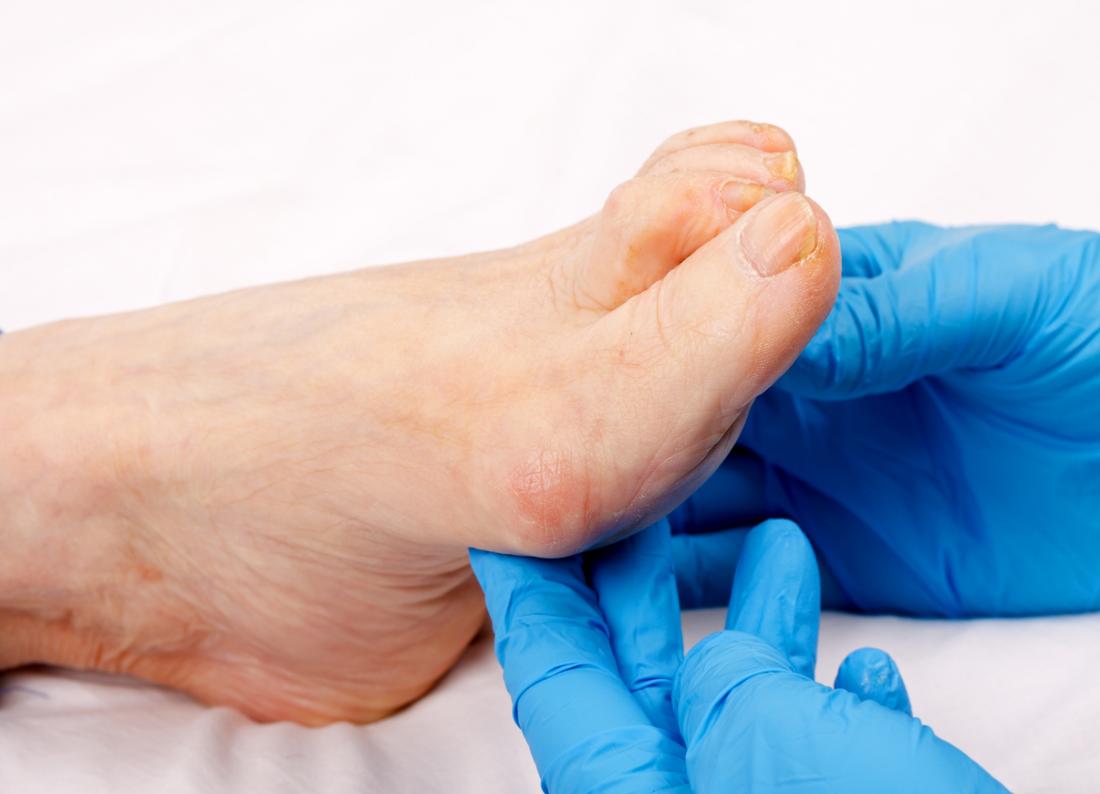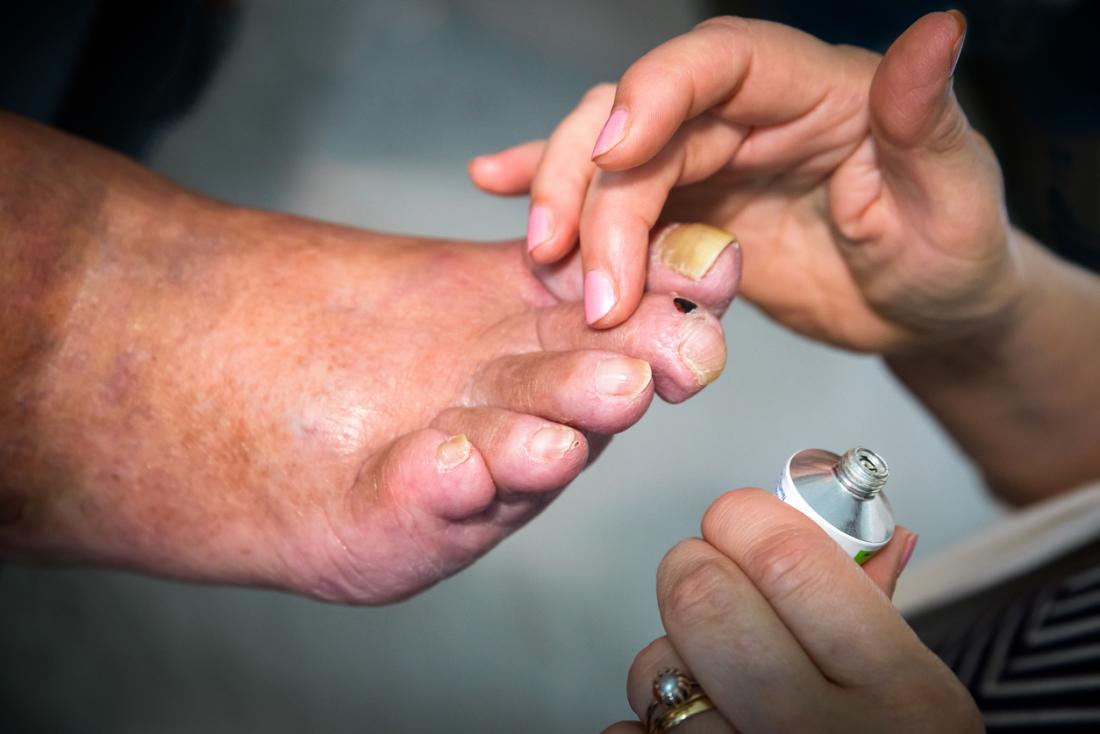How To Get Rid Of Buildup Under Toenails
Having thick nails is an unsightly condition that can affect not just fingernails but toenails too. Thick toenails, if left untreated, can worsen and cause pain.
There are many potential causes of thick nails. If these are known, a person may be able to prevent thick nails from forming and treat them quickly if they do develop.
In this article, we examine the causes as well as the accompanying symptoms and treatment options for thick toenails.

Fingernails and toenails act as a strong barrier between the soft tissue of the nail bed under them and the environment beyond.
Most people use their fingernails daily, to scratch an itch or for manual tasks, such as removing lids on jars or bottles.
As a person ages, their nails can start to break down, or they may develop a condition that causes thick nails to form.
Although there are many potential causes of thick nails, in the toenails a fungal infection is the most common cause.
Other diseases, such as psoriasis or diabetes, may also cause thick nails to develop.
The exact cause of thick nails will help decide the treatment a person has to correct the condition.
Thick toenails may go unnoticed in the early stages. But as the nails get more obviously thicker, a person may notice several symptoms, including:
- brittle, easy-to-break nails
- bad odor from the nail
- nails lift easily from the nail bed
- cutting or trimming is difficult
- splitting or cracking of the nail occurs easily
- dirt or other debris gets under the nails
- pain or discomfort can be felt
Also, as the toenails gradually thicken over time, they may appear gnarly with some scaling on the surface.
Often, the nails will take on a yellow, green, or brown hue.
There are a variety of reasons why nails may thicken. Many of the causes relate to either infections or other medical conditions connected to nail thickening.
Some of the most common causes are listed below:
Fungal and yeast infections
Primarily, fungal infections affect a person's toenails.
A type of fungal infection called onychomycosis is one of the most common causes of thick nails.
Fungal infections often grow in toenails because they thrive in warm, moist environments. They are easily spread and can develop quickly, causing many of the symptoms described above.
To avoid fungal infections, people should avoid walking around barefoot in public places, especially locker rooms and showers, and by keeping footwear dry.
Some people are more prone to fungal infections than others. Some of the leading causes of fungal infections in the toenails include:
- athlete's foot spreading to the toenail bed
- constant exposure to wet areas
- smoking
- constricted footwear
- weakened immune system
- medical conditions, such as psoriasis, circulatory problems, and type 1 and 2 diabetes
- damage to or next to the nail
Injury
Toenails can thicken as a result of sudden or repeated trauma or injury. Mostly, this happens to people involved in sport or exercise, such as soccer players, runners, and dancers, but also to people with ill-fitting shoes.
Often, thick nails due to injury are mistaken for fungal infections.
Yellow nail syndrome
This less-common cause of thick nails affects both fingernails and toenails. The condition causes the nails to yellow and become curved and thickened.
A person with yellow nail syndrome often experiences respiratory problems and swelling in the arms and legs due to a buildup of fluid around the lungs and in the limbs.
Although doctors do not know the exact cause of yellow nail syndrome, some believe there is a strong genetic connection.
Psoriasis
Psoriasis is an autoimmune disorder that typically causes red, scaly patches on the skin. Psoriasis of the nails often accompanies the skin disorder, affecting both the fingernails and toenails.
When psoriasis is the direct cause of thickened nails, a person is likely to develop ridges on the nails, and the nails may loosen and separate from the nail bed.
Paronychia
Paronychia is a skin condition that causes redness and swelling around the nail. Over time and multiple infections, both fingernails and toenails may become thick. A person may notice that layers of the nail start to peel off.
People are more likely to develop paronychia from frequently sucking on their fingers, dishwashing, and trimming the nails or cuticles too much.
Several occupations are also more of a risk for developing thick nail due to paronychia. These jobs include:
- dishwashers
- bartenders
- laundry workers
- cleaners
- cooks
- nurses
- people who fish
Aging

Aging may cause the toenails, as well as the fingernails, to thicken.
Often, as a person ages, the nails on their toes start to thicken. Though the condition is most common on the toenails, it is possible for the fingernails to thicken also.
It is thought that the nails thicken as people get older because the body is not as able to renew itself as it was at a younger age.
The thick nails and the ridges that form on the nail as a result of aging are not treatable. They can be buffed slightly, however, to smooth out their appearance.
Thick nails are often the symptom of another infection or disorder.
Thick nails are not likely to cause further complications, although, if left untreated, they will continue to worsen, may cause pain, and may make wearing footwear uncomfortable.
Complications from the pre-existing conditions that caused the thick nails are, however, likely to follow. For example, thick nails may be an additional complication acquired by a person who has underlying diabetes.
Since underlying conditions often cause thick nails, a person should consult a doctor if they notice their fingernails or toenails thickening or changing color. Someone with an underlying condition, such as diabetes or psoriasis, may well be treating it already.
People who experience yellow, thickened nails without knowing a reason for them, should talk to their doctor to be sure that it is only a fungal infection and nothing more serious.
A doctor will look at a person's medical history and examine their nails. If their thick toenails are due to an underlying condition, the doctor may prescribe further therapies to help address the new symptom.
For those with fungal infections, the doctor may need to swab under the nail or take a clipping to test for fungal growth. It is important to diagnose a fungal infection early to curtail it quickly.

When thick toenails are not caused by an infection or existing condition, buffing the surface of the nail will be enough to treat it. Otherwise, treatment will be based on targeting the cause.
The cause of thick nails will be the determining factor in what treatment is used.
In instances where aging is causing a person's toenails to thicken, the treatment will likely be as simple as buffing the rough surfaces to smooth them.
In cases of psoriasis, the doctor will likely seek to treat the flare with additional medications for the resulting thickened nails.
Fungal infections are best treated early on and may require several months of therapy as the nail grows out. Some common treatments for fungal infections include:
- prescription creams or ointments
- oral medications
- removing the nail to treat the nail bed underneath
- laser therapy
Nails affected by psoriasis may require particular treatments that include topical steroids or injections to help the nails heal.
When left untreated, thick nails are likely to worsen over time. In some cases, the cause of thickening may be benign, such as aging. In other cases, treatment will be required to remove the underlying infection. This is particularly true with fungal infections.
It is important to seek medical advice and treatment when a person notices thickening or discoloration of the nails.
Read the article in Spanish.
How To Get Rid Of Buildup Under Toenails
Source: https://www.medicalnewstoday.com/articles/319847
Posted by: allenclas1974.blogspot.com

0 Response to "How To Get Rid Of Buildup Under Toenails"
Post a Comment